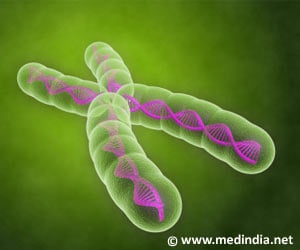A UT Arlington research team says their study of genetic information from more than 4,000 beetle species has yielded a new theory.

They call it the "fragile Y hypothesis." The biologists' idea is that the fate of the Y chromosome is heavily influenced by how meiosis, or the production of sperm, works in an organism. They believe the size of an area where X and Y genetic information mingle or recombine can serve as a strong clue that a species is at risk of losing the Y chromosome during sperm production. Previous work has attributed Y chromosome loss to the lesser importance of genes it carries.
Heath Blackmon, a Ph.D. student at The University of Texas at Arlington, said most previous research into sex chromosomes has occurred either in mammals or the fruit fly. But, beetles are the most diverse group on the planet – scientists have already described and given names to over 350,000 species."One of the big reasons that we wanted to do this study was to see if beetles would reveal anything new about the way that sex chromosomes evolve," said Blackmon, who also worked on the research at the National Evolutionary Synthesis Center in Durham, North Carolina.
Blackmon and Jeffery Demuth, UT Arlington associate professor of biology, co-authored a paper published in the June issue of Genetics on the work, which is supported by a grant from the National Institutes of Health. The paper is a part of a special "Genetics of Sex" collection from the Genetics Society of America. The X and Y genes control human sex determination, with an XY combination resulting in a male and an XX combination resulting in a female. Researchers study the evolution of these chromosomes, in part, to learn more about human evolution and disease.
Some diseases, such as hemophilia, are associated only with genes on the sex chromosomes. Like humans, sex determination in beetles is controlled by an XY pair and, in most, the Y is smaller than the X. Many of the same evolutionary forces should be acting in both groups."One of the things my lab is interested in is the evolution of genome architecture and the constraints under which that architecture evolves," Demuth said. "The sex chromosomes are particularly interesting because they are obviously a key developmental switch, and errors resulting in too many or too few copies result in several important human diseases."Besides the XY combination associated with mammals, there is a ZW combination for birds and some other animals.
There are cases in nature where both the Y and the W get lost through evolution creating XO and ZO pairs. Traditionally, scientists have explained the loss by saying that the Y chromosome must not contain enough important genetic information and so it is dispensable. In that process, any important genes move from the Y to another chromosome and sex determination takes a different route. Some scientists have even theorized that the human Y chromosome only has about another 10 million years before all genes on the Y chromosome will be lost.To find out if there was more at work in Y chromosome loss, Blackmon and Demuth assembled a database of karyotypes, a kind of chromosome map, for 4,724 beetle species, also known as the order Coleoptera.
The PAR shrinkage makes the production of offspring without an X or Y from the father more likely, the new paper said.In addition, there are some species where there is no pseudoautosomal region and special proteins shepherd the X and Y chromosome on their way to the sperm cells. The UT Arlington's team's theory says this lack of dependence on a PAR makes those species less likely to suffer the loss of a Y. The UT Arlington team's beetle results stand up to comparison in the mammal world. Placental mammals normally require a PAR to faithfully segregate the X and Y into sperm while marsupials like kangaroos do not. As predicted by the hypothesis the placental mammals have lost the Y chromosome a number of times while marsupials have not.
Source-Eurekalert
 MEDINDIA
MEDINDIA




 Email
Email







